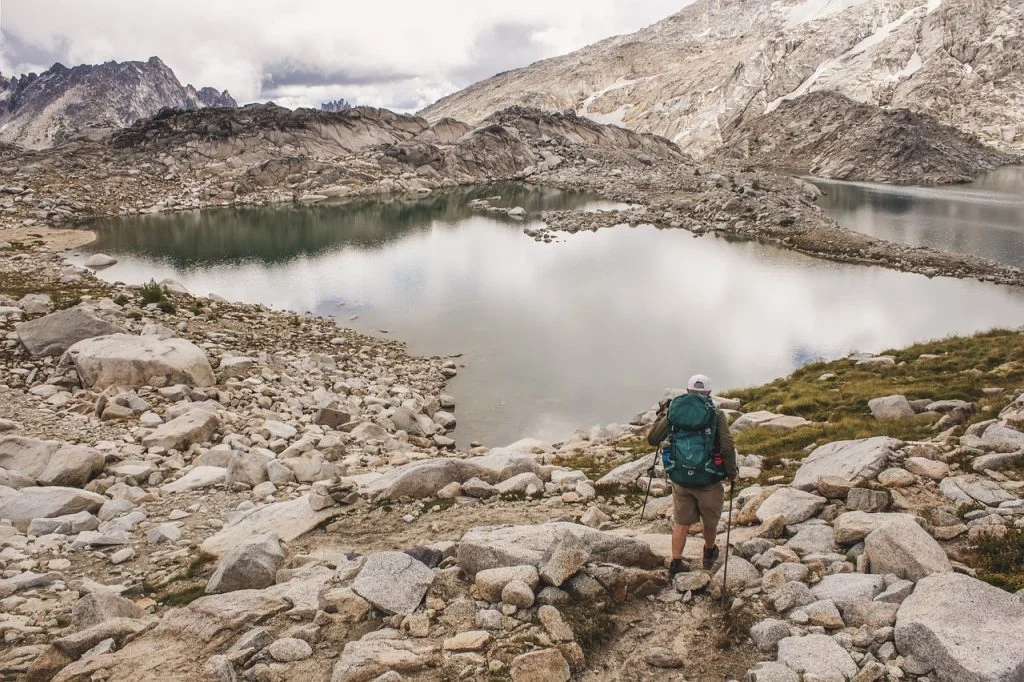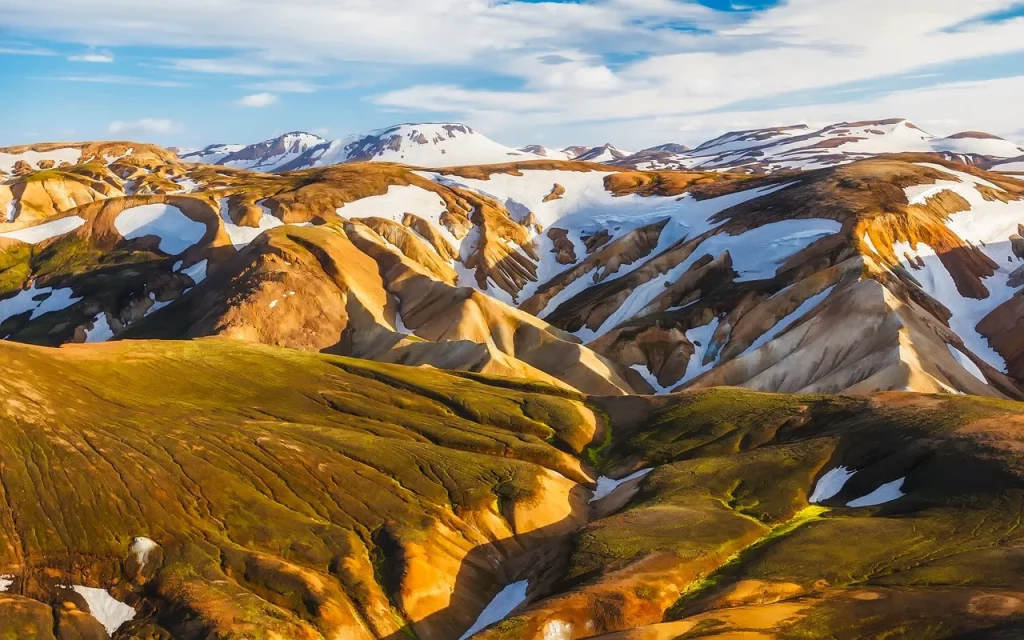Welcome, brave explorers of knowledge, to the frostbitten realm of the tundra! A place where the ground is more often frozen than your TV screen when your favorite show is on. Here, the trees are so scarce, they’d probably form an exclusive club.
In this icy expanse, you’ll find creatures that have more layers of fur than you had embarrassing phases in high school. Have you ever wondered how a polar bear keeps its cool? No, it’s not just by being the trendiest bear on the block!
The tundra is not lifeless; it is a slow dance of survival.
Rachel Carson
Tundra Facts
Welcome to the exploration of the tundra biome! Dive into the fascinating world of this unique ecosystem, and remember, a quiz awaits at the end of this journey, so read thoroughly and enjoy the learning adventure!
- The tundra is the coldest of all the biomes.
- Permafrost, a layer of permanently frozen subsoil, characterizes the tundra.
- There are two types of tundra: arctic and alpine.
- Arctic tundra is found in the northern hemisphere, encircling the North Pole.
- Alpine tundra occurs on mountains worldwide at high altitudes.
- Plant growth in the tundra is limited due to the short growing season.
- Tundra soils are typically nutrient-poor and acidic.
- Winter temperatures can drop below -30°C (-22°F) in the arctic tundra.
- During summer, the top layer of permafrost thaws, allowing plants to grow.
- Animal adaptations in the tundra include thick fur and fat layers for insulation.
- The tundra’s vegetation mainly consists of mosses, lichens, and small shrubs.
- Arctic tundra supports wildlife like polar bears, arctic foxes, and caribou.
- Climate change is causing rapid warming in the tundra regions.

- Tundra ecosystems are particularly vulnerable to global warming.
- Melting permafrost can release greenhouse gases like methane.
- Alpine tundra lacks trees due to the high altitude and harsh conditions.
- The tundra is characterized by long, cold winters and short, cool summers.
- Precipitation in the tundra is low, often less than 25 cm (10 in) a year.
- Arctic tundra regions experience continuous daylight in summer and darkness in winter.
- The tundra’s sparse vegetation supports a limited number of herbivores.
- Migratory birds breed in tundra regions during the short summer.
- Human activities like oil drilling can have significant impacts on the tundra.
- Soil in the tundra often has a high water content due to low evaporation.
- Some animals, like the Arctic hare, change color for camouflage.
- Permafrost thawing can lead to ground subsidence and infrastructure damage.
- The tundra is a fragile ecosystem, sensitive to human impacts and climate change.
- Traditional indigenous communities inhabit some tundra regions.
- Alpine tundra is found in many parts of the Rockies, Andes, and Himalayas.

- The tundra’s simple food web makes it vulnerable to ecological disruptions.
- Global warming is leading to the northward expansion of the tundra.
- Wind erosion is a significant factor in shaping the tundra landscape.
- Some tundra regions experience permafrost melt lakes formation.
- Low biodiversity is a characteristic of the tundra biome.
- Reindeer herding is a traditional livelihood in some Arctic tundra areas.
- Insects like mosquitoes thrive in the tundra during the brief summer.
- Arctic tundra soil is often frozen for most of the year.
- The tundra’s clear skies are ideal for viewing the Northern Lights.
- Conservation efforts are crucial for protecting the tundra’s unique biodiversity.

- Some bird species migrate to the tundra from as far as the Southern Hemisphere.
- Alpine tundra plants are adapted to harsh winds and UV radiation.
- The tundra is one of the Earth’s largest carbon sinks due to permafrost.
- Lemmings are a keystone species in the Arctic tundra ecosystem.
- There is a significant variation in daylight hours throughout the year in the tundra.
- Climate change is altering the composition of tundra vegetation.
- Some tundra areas are experiencing shrubification, which is the increase of shrub growth.
- Arctic tundra covers about 20% of the Earth’s surface.
- Thermal inversion is a common meteorological phenomenon in the tundra.
- The tundra plays a crucial role in Earth’s climate regulation.
- Overgrazing by reindeer and caribou can lead to vegetation damage in the tundra.
- Microbial life in the tundra soil plays an essential role in nutrient cycling.
Tundra Myths

After delving into the tundra’s true nature, it’s time to dispel the myths and shine a light on what’s really happening in these frigid expanses.
- The Tundra is Always Covered in Snow
While the tundra is known for its cold climate, it’s not always a snowy wonderland. During the short summer months, snow melts, revealing vast expanses of mosses, lichens, and small shrubs. It’s like the tundra puts on a different outfit for each season! - Nothing Grows in the Tundra
Contrary to popular belief, the tundra is not a barren wasteland. It hosts a variety of hardy plants adapted to the extreme cold. These plants are the real tough cookies, surviving in conditions where others wouldn’t dare to sprout. - The Tundra is Lifeless
This is far from the truth! The tundra is home to unique wildlife, including reindeer, Arctic foxes, and various bird species. It’s like a chilly, exclusive club for the most resilient animals. - There are No Trees in the Tundra
While trees are scarce in the tundra due to the harsh climate, some areas, especially the taiga-tundra border, do have small, stunted trees. They’re like the underdogs of the tree world, small but mighty. - The Tundra Doesn’t Affect Global Climate
The tundra plays a significant role in the global climate, especially through its permafrost, which stores massive amounts of carbon. When it thaws due to global warming, it releases greenhouse gases, showing that even the coldest places have a warm impact on our planet.
No products found.
Tundra Quotes

Here are five quotes about the Tundra Biome. Feel free to add more in the comments section, and I will add them here.
In the tundra, silence speaks louder than words.
Barry Lopez
Barry Lopez, an American author, reflects on the profound and communicative silence one experiences in the vast and empty tundra landscapes.
The tundra’s beauty lies in its starkness, a testament to nature’s endurance.
Annie Dillard
Annie Dillard, an American author, captures the raw and enduring beauty of the tundra, emphasizing its minimalist and rugged charm.
Beneath the tundra’s surface lies a story of ancient life.
David Attenborough
Naturalist David Attenborough alludes to the rich history and prehistoric life that the tundra’s frozen ground preserves.
The Arctic tundra challenges the brave and rewards the persistent.
Will Steger
Explorer Will Steger speaks to the demanding nature of the tundra, noting that those who persevere are rewarded with unique experiences.
Tundra is not a barrier but a blank canvas for nature’s wonders.
Jane Goodall
Jane Goodall, a renowned primatologist, views the tundra not as a desolate place but as a vast canvas displaying the wonders of nature.
Tundra FAQ

You’ve been inspired by the quotes, and now it’s time for the FAQ section. Keep your eyes sharp – there’s a quiz waiting just around the corner!
- What is the Tundra Biome?
The tundra is a cold, treeless biome found in the Earth’s polar regions and atop mountains where the climate is too harsh for trees to grow. It’s characterized by its short growing seasons, low temperatures, and permafrost – a layer of permanently frozen subsoil. - What Kind of Wildlife Lives in the Tundra?
Despite its harsh conditions, the tundra supports a variety of life. Animals like the Arctic fox, polar bear, and caribou are well adapted to the cold. Birds, including snowy owls and various species of migratory birds, are common in the summer. Plant life is limited to hardy species like mosses, lichens, and dwarf shrubs. - How Do Plants and Animals Survive the Extreme Tundra Climate?
Plants and animals in the tundra have adapted to survive the extreme cold and wind. Many animals have thick fur or feathers for insulation, and some change color to blend in with the snow. Plants are usually low-growing to avoid wind damage and have a short growth cycle to take advantage of the brief summer. - What are the Main Threats to the Tundra Biome?
Climate change is a significant threat, causing permafrost melting and habitat changes. Human activities like mining and oil drilling also pose risks, along with pollution and the introduction of non-native species that can disrupt the delicate ecological balance. - Can the Tundra Biome Recover from Environmental Damage?
Recovery in the tundra is slow due to its short growing seasons and fragile ecosystem. Efforts to minimize human impact and global initiatives to combat climate change are crucial for the preservation and recovery of this unique biome.
No products found.
Tundra Quiz

Get ready to break the ice with the Tundra Quiz! But beware; score zero, and you’ll be appointed as the honorary snowman in the land of eternal winter!
Conclusion
As our journey through the tundra comes to a close, we’re left with a deeper appreciation for this extraordinary biome. The tundra, with its vast, open landscapes and resilient wildlife, is a testament to nature’s adaptability in the face of harsh conditions. Yet, it’s also a fragile ecosystem, sensitive to the slightest changes.
This brings us to a pivotal question: How can we, as individuals, contribute to preserving the unique beauty and ecological balance of the tundra? Your thoughts and actions can make a significant impact.
2 Sources Used For This Article

